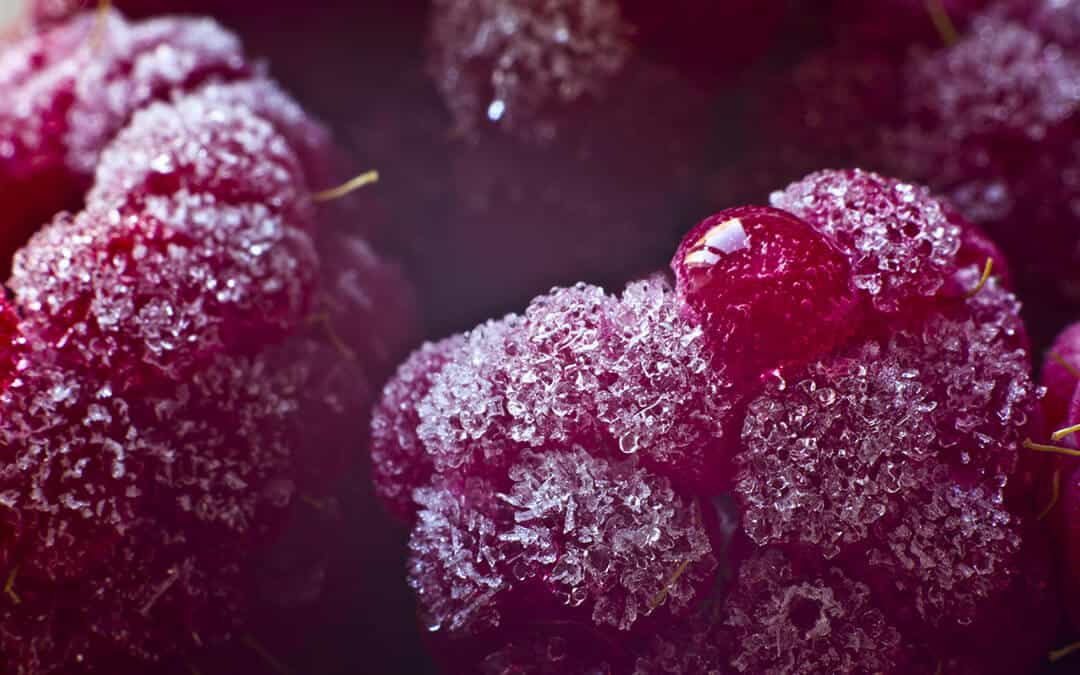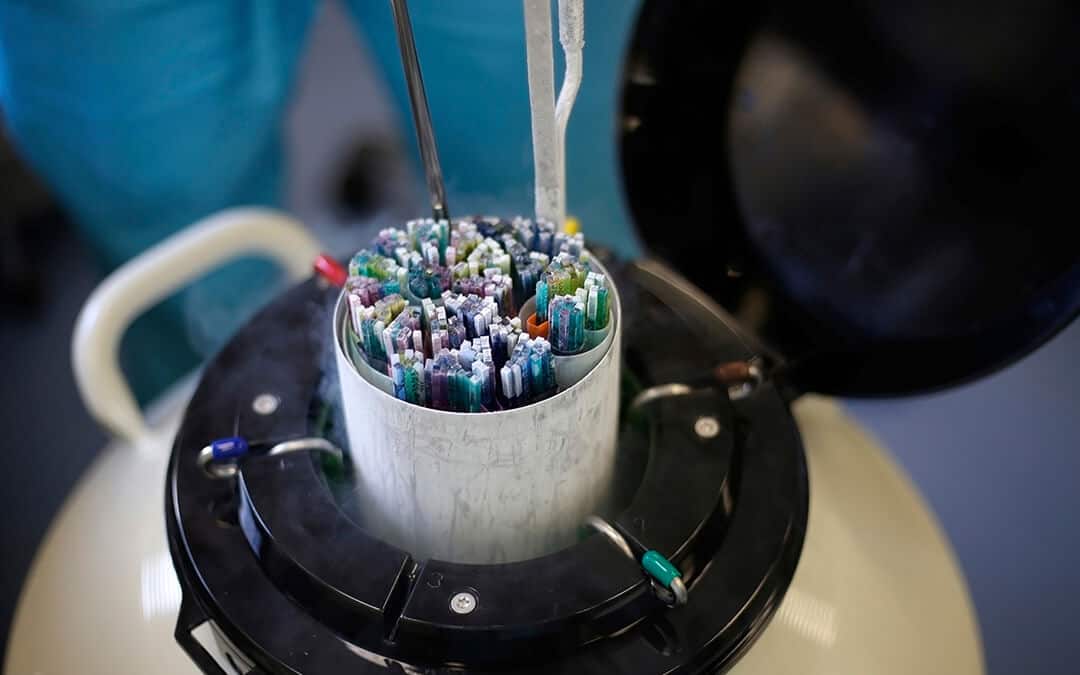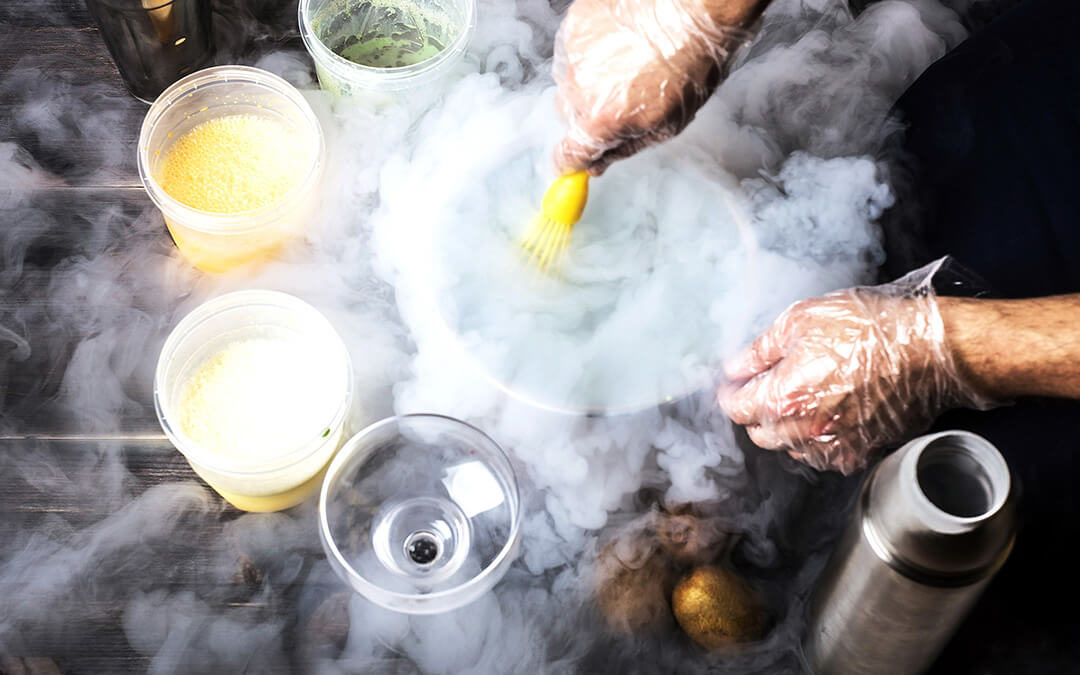When a gas is liquefied, it becomes cryogenic. At very low temperatures – between -150°C and -273°C – the chemical properties of gases change. When gases are cooled into liquids, their molecular movement slows down – with movement stopping completely at -273°C.
Cryogenics originated in the late 19th century, when oxygen was first observed to liquefy at -183°C. As practical applications for cryogenic liquids were discovered over time, advanced refrigeration systems were eventually developed. The future of cryogenics is still being written, as experimentation with human and animal cryo-preservation, or cryonics, continues – though cryogenic resuscitation is not quite/yet possible. Maybe one day.

Freezing a Gas Into a Liquid
Molecular movement affects material form, which in turn reflects the amount of energy a material contains. When water reaches 0°C, for example, it changes from a liquid to a solid – and when the temperature of ice rises above 0°C, it changes to a liquid. As temperatures rise, molecular movement increases. As temperatures fall, molecular movement slows. Temperature is a measure of the energy a material contains.
Liquid gases at or below -150°C are cold enough to freeze other materials in cryogenic environments. The most common gases that are liquefied for cryogenic purposes are nitrogen, oxygen, hydrogen, argon, and helium. Liquid nitrogen, the most widely used element in modern cryogenics, is colorless, odorless, noncorrosive, and nonflammable.
Cryogenic freezing – through rapid blast or immersion freezing methods – is used to preserve food products, blood and tissue samples, and biotechnology products, such as vaccines, that are subject to eventual spoiling in an unfrozen state. Cryogens like liquid nitrogen are in regular use in the food processing industry, for packaging, storage, and transport of food products.
Cryogenic food freezing helps minimize dehydration in food products, preserving flavor, texture, and color, while preventing individual pieces, like peas, from sticking together. Cryogenic freezing is an efficient, cost-effective method of preserving and maintaining food quality during the final production stages of processing and packaging.

Crystallized Preservation
When sprayed with liquid nitrogen in a sealed tank, food items release heat. As the liquid nitrogen vaporizes, it absorbs the heat and takes the form of tiny crystals. The crystals are distributed evenly across the surface of the frozen food item, locking in qualities like flavor and texture, while retaining desired moisture levels.
Cryogenic freezing is especially useful for packaging bulk food items where individual pieces must be maintained. Traditional freezing methods can produce larger crystals, which are not as effective for preserving the integrity of food products – or for keeping individual pieces separated.
Fast Freezing
Liquid nitrogen offers a freezing process that’s faster and more flexible than traditional refrigeration and other mechanical chilling processes. Due to the simplicity of their design and operation, cryogenic freezers are less likely to fail than complex refrigeration systems. As such, they provide more security for long-term storage and preservation of biological materials and other delicate samples.
Liquid nitrogen can be stored in a variety of containers, depending on the amount needed for use. Dewars (named for the man who first liquefied hydrogen, James Dewar) are non-pressurized containers that can hold 5 to 200 liters of cryogenic liquid. Cryogenic liquid cylinders, which can hold 80 to 450 liters of cryogenic liquid, are pressurized and insulated, with safety relief valves and rupture discs to help prevent pressure buildup. Also pressurized and insulated, cryogenic storage tanks hold even larger amounts of cryogenic liquid, and are typically mounted as stationary vessels in fixed locations.
CalOx supplies liquid nitrogen – and storage supplies – to suit a range of cryogenic applications. Contact us to learn more.
